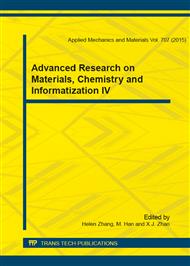p.117
p.121
p.126
p.133
p.137
p.144
p.149
p.154
p.158
Difference of Cell Morphology on Different Callus Types of Alfalfa
Abstract:
In order to induce embryo from callus and set up the integral somatic embryo induction system from monoclonal cell, the differences of cell morphology and structure from different types of alfalfa callus were observed and compared by quick section and microscopic examination. The results show that giant callus cells were larger, elongated and yellow-white; loose callus cells were smaller, spherical, soft and yellow-green; hard-type callus cells were round, hard and dark green. The cell volume of giant callus was 4.5 times more than loose callus cells and 9 times more than hard-type callus cells. The biggest change of vacuole number and form were giant callus cells, which had 48%cells of 5-8 big vacuoles. Loose callus cells had 89%cells of 2-4 small vacuoles and hard-type callus cells had 97% cells with one large central vacuole. Loose callus cells had more chloroplast, which were 4.65 times more than giant callus cells. The chloroplast of hard-type callus cells was gathered into groups, which had 3-5 chloroplasts in it. The most nucleuses of giant callus cells and loose callus cells were located in the central of cell and 96.8% nucleus of hard-type callus cells were located on the edge. In hard-type callus cells there were different number of rings, thread and textured ducts. In short, there were lower cell differentiation and clearer vacuolization in giant callus, and high degree of differentiation and tissue aging in hard-type callus. The loose callus was undifferentiated, was lower on vacuolization and apparent on characteristics of embryonic callus, so that it was more suitable for induction of somatic embryos.
Info:
Periodical:
Pages:
137-143
Citation:
Online since:
December 2014
Authors:
Keywords:
Price:
Сopyright:
© 2015 Trans Tech Publications Ltd. All Rights Reserved
Share:
Citation:


